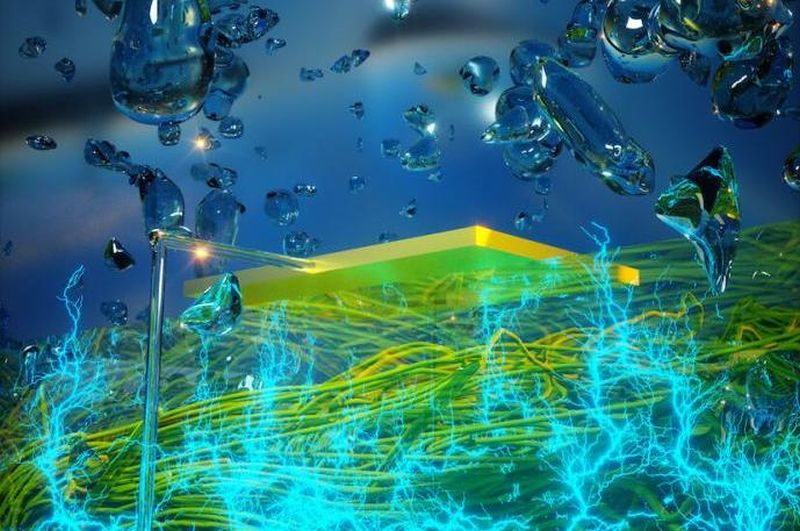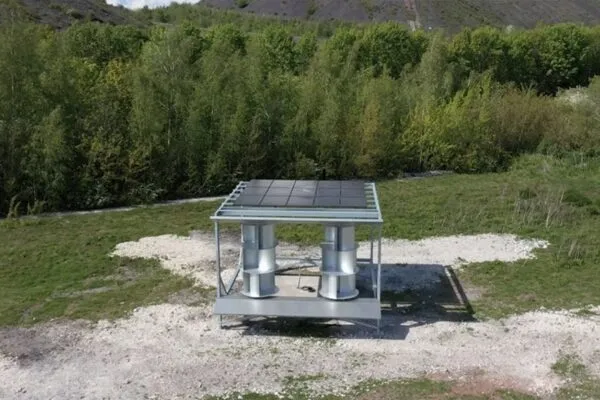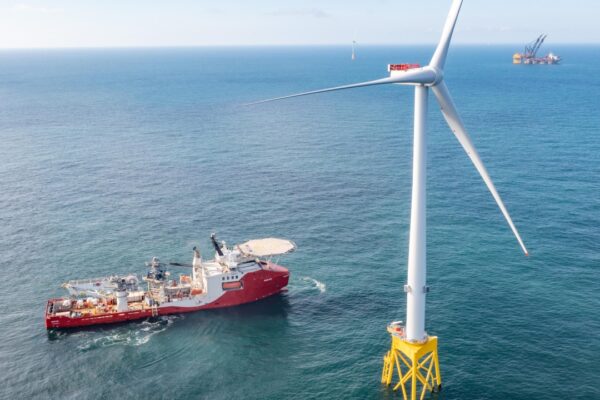Air-Gen Generates Electricity from Humidity Using Protein Nanowires
Amidst the crisis of climate change, the global communities are striving to achieve amounts of renewable energy resources in order to reduce emissions generated by fossil fuel consumption. Whereas the solar and wind energy are contributing their fair share toward achieving this goal, these two depend on sunlight and wind.
Exploring new aspects of renewable energy, the scientists at the University of Massachusetts Amherst have developed Air-gen, a device that uses natural protein to create electricity from moisture in the air. This new technology could have a significant impact on the future of renewable energy.
According to the study published in the science journal Nature, the laboratories of electrical engineer Jun Yao and microbiologist Derek Lovley have created the device called “Air-gen” or air-powered generator.

Illustration showing electric currents traveling between two electrodes as a film of protein nanowires absorbs water from the air / Image: UMass Amherst/Yao and Lovley labs
The device generates electricity through electrically conductive protein nanowires produced by the microbe Geobacter. Air-gen connects electrodes to the protein nanowires in such a way that electrical current is generated from water vapors present in the atmosphere. It is capable to generate power even in areas with extremely low humidity such as the Sahara Desert.
Lovley discovered the Geobacter microbe in the mud of the Potomac River more than 30 years ago. His lab later discovered its ability to produce electrically conductive protein nanowires. It has significant advantages over wind and solar energy because unlike these other renewable energy resources, the Air-gen does not require sunlight or wind and it even works indoors.
The working mechanism includes only a thin film of protein nanowires less than 10 microns thick. With the bottom of the film resting on an electrode, while a smaller electrode on top that partially covers the nanowire film, the film adsorbs water vapor from the atmosphere.
A combination of electrical conductivity and surface chemistry of the protein nanowires, coupled with the fine pores between the nanowires within the film, creates the conditions that generate an electrical current between the two electrodes.
According to scientists, the current generation of Air-gen devices is able to power small electronics and they expect to bring the technology to commercial scale soon. They aim to develop a small Air-gen “patch” that can power electronic wearables like health and fitness monitors, and smartwatches, which would eliminate the requirement for traditional batteries.
If the researchers succeed, it could open various new aspects in the area of renewable energy and will significantly help the world in eliminating carbon emissions.
Via: SciTechDaily


